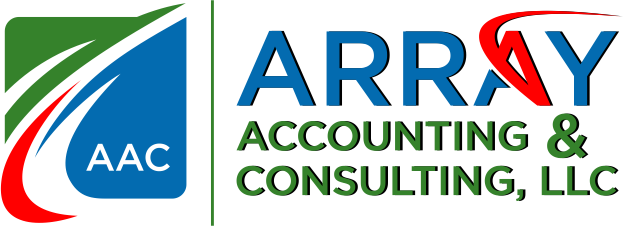10 Essential Nonprofit Accounting Best Practices for Financial Transparency
- Array Accounting & Consulting

- Jan 22
- 2 min read

Nonprofit organizations operate in a unique financial landscape where transparency and accountability are essential. By adopting best practices in nonprofit accounting, your organization can ensure donor trust, regulatory compliance, and operational efficiency.
Here are 10 essential strategies every nonprofit should follow.
1. Implement Fund Accounting
Fund accounting allows nonprofits to track income and expenses by designated purpose, ensuring funds are used as intended by donors or grants. This practice provides clarity and accountability, which is crucial for donor confidence.
2. Use GAAP Standards
Complying with Generally Accepted Accounting Principles (GAAP) ensures accuracy and consistency in financial reporting. GAAP adherence is a requirement for many grantors and large donors.
3. Maintain Accurate Records
Keeping detailed and accurate records of financial transactions is the foundation of transparency. Use robust accounting software tailored to nonprofit needs to automate and organize records.
4. Track Restricted vs. Unrestricted Funds
Clearly distinguishing between restricted and unrestricted funds prevents misallocation and ensures compliance with donor agreements.
5. Prepare Detailed Budgets
Annual budgets guide financial decision-making and resource allocation. Nonprofits with clear budgets are 25% more likely to achieve their financial goals (Nonprofit Finance Fund, 2023).
6. Conduct Regular Financial Audits
Annual or biannual audits by independent professionals provide accountability and uncover potential inefficiencies. Organizations that undergo audits report increased donor trust (Nonprofit Quarterly, 2024).
7. Provide Transparent Financial Reports
Create easy-to-read financial reports and share them with stakeholders. Transparency boosts donor retention, with 90% of donors citing trust as a key reason for ongoing support (Charity Navigator, 2023).
8. Utilize Key Performance Indicators (KPIs)
Track metrics like program efficiency ratios, donor retention rates, and fundraising ROI. These KPIs offer valuable insights into financial health and mission impact.
9. Invest in Training and Technology
Equip your staff with training on financial systems and nonprofit accounting standards. Organizations that invest in technology report a 40% increase in operational efficiency (TechSoup, 2024).
10. Adopt Internal Controls
Implement safeguards like dual signatories, regular reconciliations, review, supervision, monitoring, and role-based access to accounting systems. Internal controls prevent errors and fraud.
Conclusion
By following these best practices, nonprofits can strengthen financial transparency, build stakeholder trust, and ensure long-term sustainability. Need help optimizing your nonprofit’s accounting practices? Array Accounting & Consulting specializes in nonprofit financial services to help you focus on your mission.





Comments